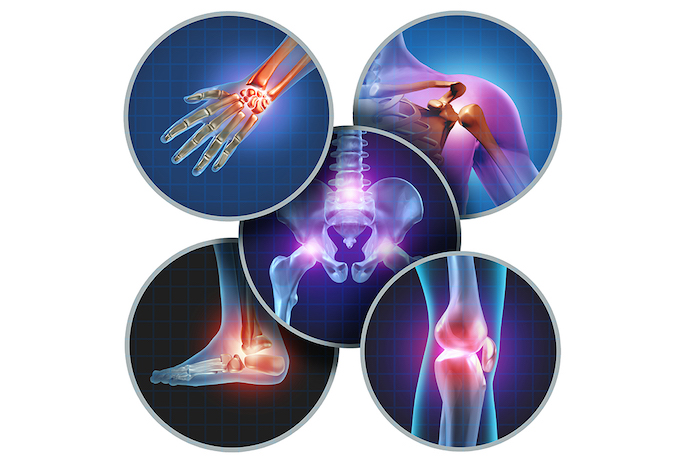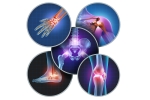
Occupational Therapists (OTs) are an essential part of the pain management team. This article explores how OTs are well-positioned to support patients living well with chronic pain through a holistic treatment lens.
Occupational Therapists (OTs) are registered healthcare providers employing client-centered practice, helping individuals engage in meaningful activities in the areas of self-care, leisure, and productivity. OTs support recovery and overall well-being by addressing patient concerns that impact their ability to perform activities that provide a sense of purpose and fulfillment. OTs are concerned with seeing the whole person from a physical, cultural, social, environmental, cognitive, and spiritual level. Chronic pain can lead to significant changes in one’s engagement in meaningful activity and OTs are well-positioned to assess and provide appropriate treatment to promote autonomy and quality of life.
Chronic pain leads to changes in activity levels. When pain flares up, it is likely that one may engage in less activity to prevent further exacerbation of pain. On days when individuals feel less pain, they may perform many activities in order to complete everything while pain is temporarily at bay. This, however, often results in a “boom-bust” cycle of activity which can lead to days of increased pain and less overall activity performance. OTs are experts at analyzing activity and observing what areas of the person, environment, or “occupation” (anything that occupies one’s time) are limiting engagement.
OTs are also well-trained in using activity analysis to inform clients about pacing and modifying activities to reduce the use of excess energy. Pacing involves breaking down activities into steps or stages. Pacing involves calculating a baseline of activity using an average length of time one can tolerate an activity before feeling pain. Goals for activity are then set according to these baseline measurements. In so doing, this encourages patients to set time frames for activities rather than basing activity engagement on one’s perception of pain.
This is an individualized activity goal-setting exercise that should be done with the support of a trained healthcare provider such as an OT. OTs observe clients in their natural environments such as their homes and use activity analysis to find different ways for individuals to perform essential tasks and activities such as doing the laundry or cooking in ways that are safe and practical.
OTs are medical rehabilitation professionals and are therefore educated on the ways in which movement and pain interact through applying a biomechanical framework when assessing and treating patients. These professionals pay close attention to the impact that certain movements can have on pain. Some activities, sports, or exercises may in fact exacerbate pain.
OTs use their knowledge of musculoskeletal conditions and anatomy/physiology to prescribe appropriate treatment plans that will mitigate pain and prevent further disability. Splinting, swelling or edema management, training for coordination and dexterity, use of thermal modalities, massage and acupressure, and many other modalities can be used to help physically with chronic pain. Gentle passive and active range of motion exercises, as well as carefully designed exercise plans, are also additional ways in which OTs can promote positive pain management.
Assistive devices, otherwise known as compensatory strategies from a theoretical lens, are another important component of proactive chronic pain management. OTs undergo additional training to be able to prescribe assistive devices and mobility aids such as walkers, wheelchairs, and canes to enable occupation.
Certain OTs are specifically certified in the authorization of such mobility aids. OTs provide education to clients on how to properly use their assistive devices to decrease and/or manage chronic pain. Other more general assistive devices such as long-handled reachers, shoe horns, and dressing aids can be used to simplify daily tasks so that less exertion is needed to perform activities of daily living, leaving more time and energy for more meaningful activities such as spending time with family or engaging in a preferred leisure activity.
There can be significant mood and thinking changes when chronic pain sets in. Depression, anxiety, and hopelessness can often be present when a patient is living with chronic pain. As OTs are concerned with treating the whole person, this includes mental health and spiritual well-being. OTs in Canada, for example, may practice the controlled act of psychotherapy. This includes interventions that are discussed throughout this blog such as Acceptance and Commitment Therapy, Cognitive Behavioural Therapy, and Mindfulness. OTs can address depressive symptoms through the use of behavioral activation strategies, creating schedules, and assessing daily routines to promote activity engagement, which may not only help with chronic pain, but also support improvements in mood, energy, and overall functioning.
Chronic pain may not only limit engagement in leisure and self-care but can significantly impact one’s ability to perform work activities. OTs can advocate for clients to promote successful reintegration into the workforce. OTs provide vocational rehabilitation, consulting on ergonomic changes of workstations, providing return-to-work plans, and liaising with employers and insurers to help create appropriate accommodations to facilitate the transition back to work or to help employees with chronic pain remain at work. OTs can look specifically at the work duties and suggest alternative movements that may be safer for individuals with chronic pain.
Though more research is needed on the role of OTs in chronic pain treatment, it is clear that OTs have the knowledge, training, and qualifications to be able to support individuals living with chronic pain. By assessing the whole person, within their communities and home environments, OTs can use their unique perspective to promote occupational balance and facilitate education about living well with chronic pain.
OTs are often part of interdisciplinary teams at hospitals and clinics and may be found in community care as well as private practice. If you are interested in learning more about OTs in your area and how they may be able to support you with chronic pain management, talk to your primary physician or pain specialist, or check out the OT professional organization in your province or territory.
Precision Pain Care and Rehabilitation has two convenient locations in Richmond Hill – Queens and New Hyde Park – Long Island. Call the Queens office at (718) 215-1888, or (516) 419-4480 for the Long Island office, to arrange an appointment with our Interventional Pain Management Specialist, Dr. Jeffrey Chacko.













